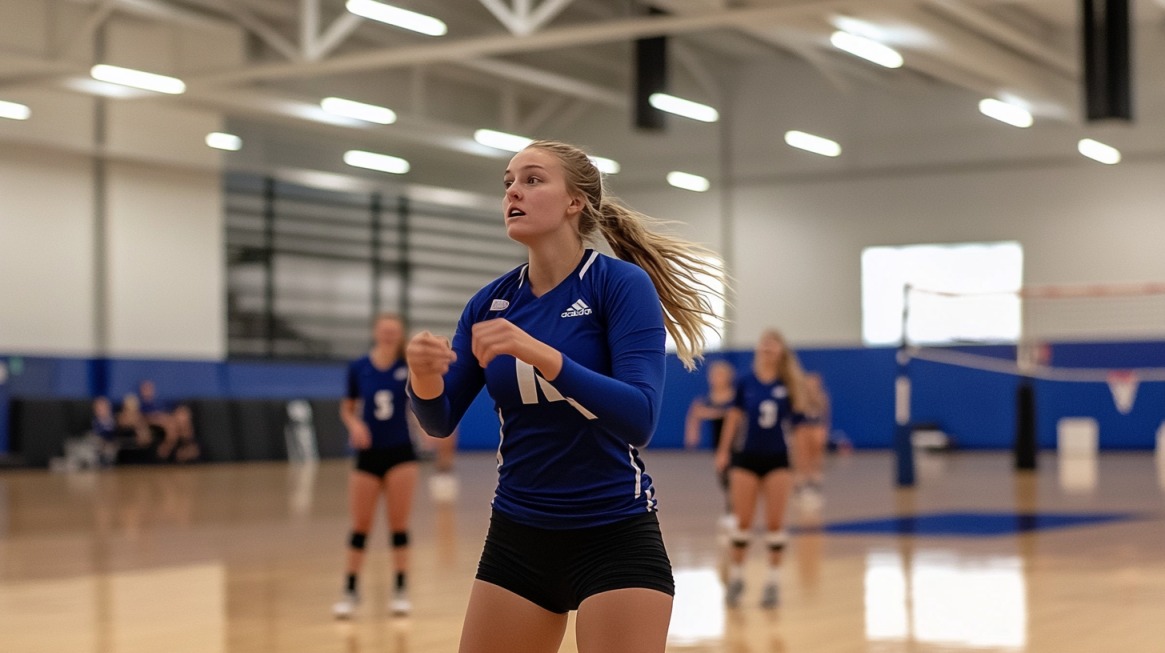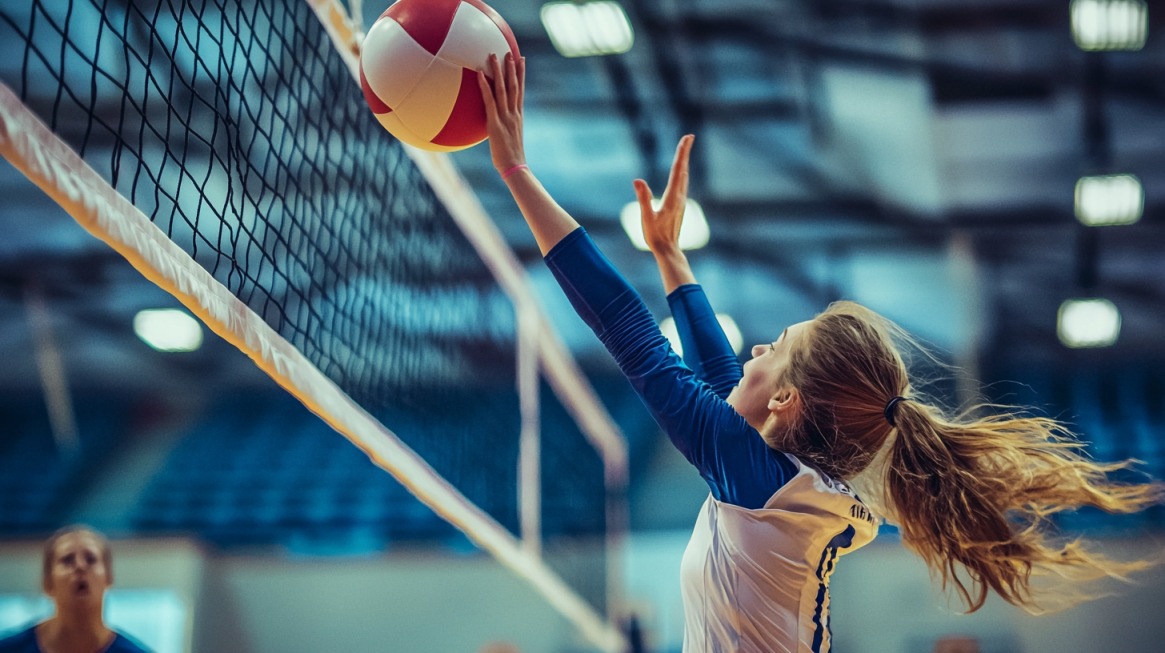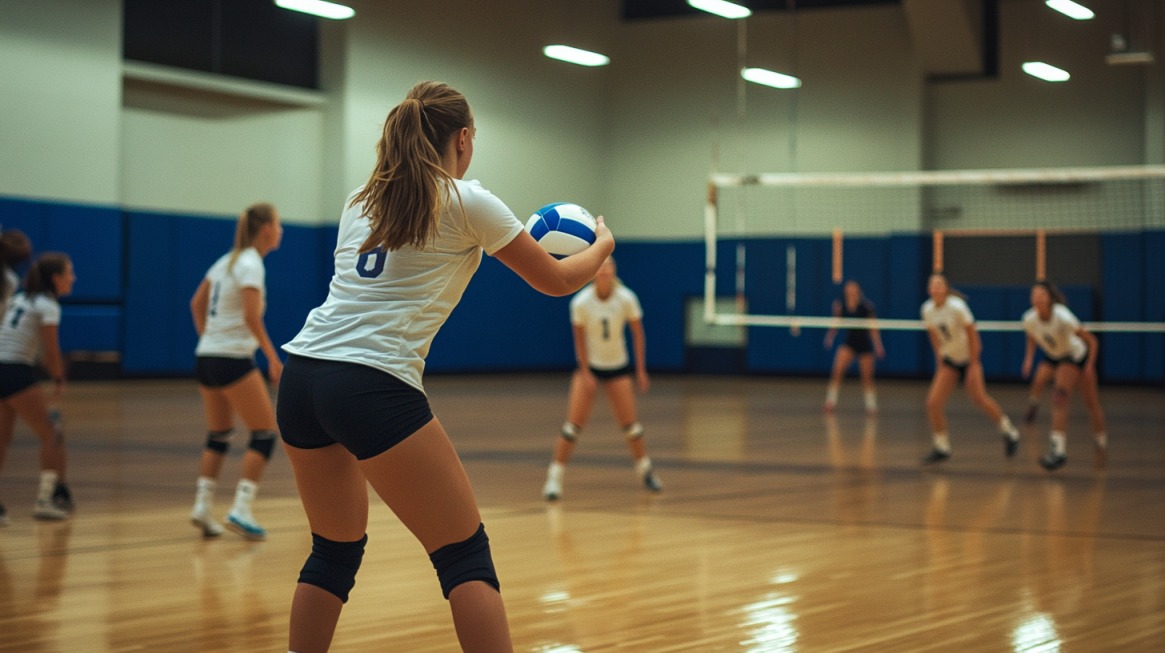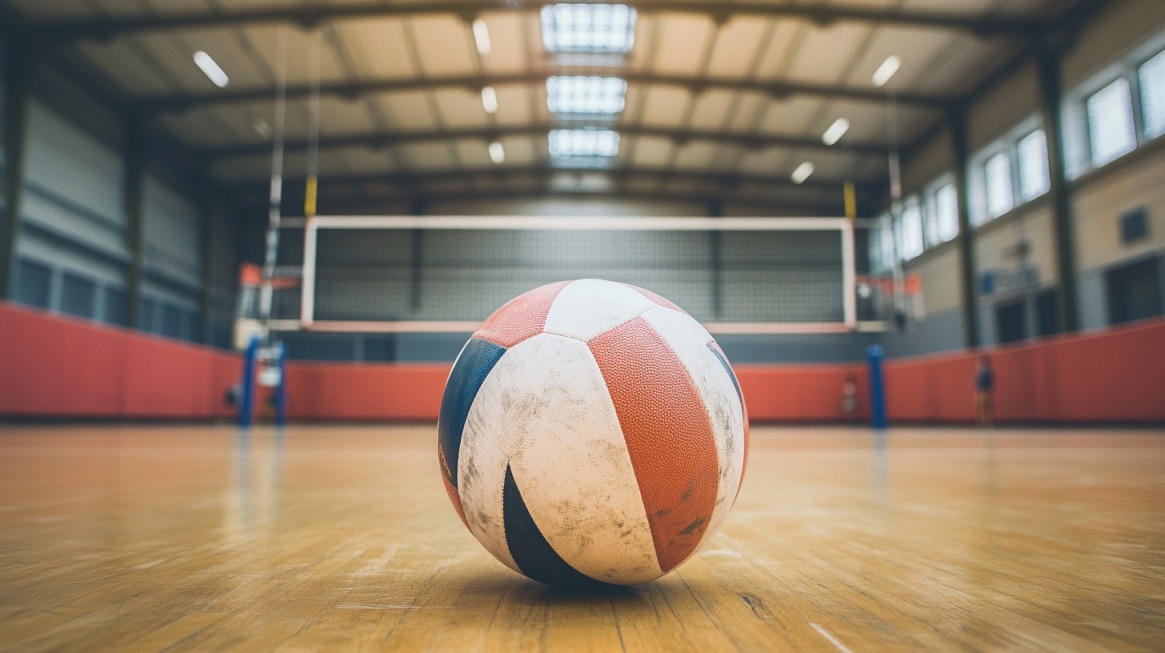Drills are essential in building foundational volleyball skills and improving overall team performance.
Practicing consistently helps athletes feel more confident and prepared during games. Drills improve technique, strengthen muscle memory, and sharpen decision-making under pressure.
- Passing
- Setting
- Serving
- Spiking
- Blocking
Let us talk about it.
Warm-Up Drills
Warming up properly before any volleyball practice or game is essential for building focus, enhancing muscle performance, and preventing injury.
Effective warm-up drills engage the body and mind, helping athletes transition into a competitive mindset. Boosting energy levels, sharpening hand-eye coordination, and syncing team movement create a solid foundation for productive practice sessions.
A consistent warm-up routine helps players feel confident and prepared when the game begins.

Energy Check Drill
Building team energy and focus at the start of practice helps set a positive tone.
The Energy Check Drill encourages players to engage with each other while developing rhythm and mental connection. The drill strengthens team cohesion and helps players tune into each other’s movements and timing.
- Players form a circle, standing shoulder to shoulder.
- One player starts by clapping and vocalizing a simple rhythm.
- The clap is passed to the next player, who repeats the rhythm and adds a new element (such as a stomp or a different vocalization).
- Players maintain eye contact and stay in sync with each other.
- The pace gradually increases to challenge reaction times and mental focus.
Benefits:
- Boosts team chemistry and communication.
- Encourages quick thinking and reaction time.
- Sharpens listening skills and rhythm recognition.
Down Ball Hitting Drill
Improving hand-eye coordination and striking accuracy helps athletes deliver more consistent and controlled hits during games.
The Down Ball Hitting Drill teaches players to focus on proper arm swing mechanics and body positioning while hitting the ball with controlled power.
Developing muscle memory through repetition allows players to adjust more easily to different ball placements.
- Players stand on the court in their regular hitting positions.
- A coach or teammate tosses the ball toward the player at a moderate height.
- The player uses a downward arm swing to hit the ball into the opposing court.
- Players rotate after each hit to practice different angles and distances.
Benefits:
- Strengthens hand-eye coordination.
- Improves accuracy in targeting different zones on the court.
- Reinforces proper hitting form and body alignment.
Passing Drills

Passing serves as the foundation for effective volleyball play. Strong passing allows teams to set up offensive plays and maintain control of the ball during intense rallies. Focusing on passing drills helps athletes improve hand-eye coordination, reaction time, and body positioning.
Drills that target different passing scenarios teach players how to adjust their positioning and footwork quickly, building confidence during live gameplay.
Consistent training also sharpens muscle memory, allowing athletes to perform under pressure without hesitation.
Passing Ladder
Passing Ladder helps sharpen hand-eye coordination and improve lateral movement. This drill encourages players to stay light on their feet while executing accurate passes under varying conditions.
| Execution | Focus Points |
|---|---|
| Players pass the ball while moving laterally in sync with their teammates. | Maintain balanced footwork while passing. |
| Coaches increase the speed of the drill to challenge reaction time and footwork. | Keep eyes on the ball and adjust hand position quickly. |
| Adjusting the height and angle of passes requires players to stay adaptable and focused. | Encourage controlled arm movement and consistent contact. |
Increasing the speed and complexity of the drill challenges athletes to react quickly and stay in sync with teammates.
Coaches should monitor body alignment and passing consistency, correcting form as needed. Regular practice builds muscle memory and improves passing accuracy during competitive play.
Shuffle Passing
Shuffle Passing focuses on developing fast footwork and consistent ball control under pressure.
Quick directional changes and precise passing help athletes sharpen reaction time and improve in-game decision-making.
| Execution | Focus Points |
|---|---|
| Players shuffle side-to-side while passing the ball back and forth. | Maintain low body positioning for quick lateral movement. |
| Coaches call out directions to increase difficulty and test reaction speed. | Keep arms extended and wrists firm while passing. |
| Adjusting hand position and foot movement ensures controlled passing. | Communicate with teammates to maintain rhythm and accuracy. |
Practicing Shuffle Passing at different speeds sharpens quick decision-making and ball control during game situations.
The constant footwork adjustments strengthen leg muscles and improve balance, making players more stable and precise during fast-paced rallies.
Low Catch Passing Drill
Low Catch Passing emphasizes proper body positioning and quick hand response. Dropping into a low stance improves balance, strengthens the lower body, and reinforces controlled passing mechanics.
| Execution | Focus Points |
|---|---|
| Players drop into a low squat and catch the ball with soft hands. | Keep weight balanced on the balls of the feet. |
| Quick hand adjustments are required to maintain control. | Engage core muscles to maintain stability while catching. |
| After catching the ball, players return to a standing position and prepare for the next toss. | Encourage quick hand movements and wrist adjustments. |
Catching and controlling the ball at low angles improves reaction time and strengthens the muscles used for quick passing.
Reinforcing low body positioning helps athletes stay balanced and stable, increasing consistency when handling low passes during actual gameplay.
Flip Flop Passing Drill
Flip Flop Passing challenges athletes to adjust quickly to shifting targets while maintaining accuracy and form. The rotating pattern builds reaction time and sharpens body alignment.
| Execution | Focus Points |
|---|---|
| After passing, players rotate positions quickly. | Keep eyes on the ball and anticipate the next pass. |
| Passing angles change with each rotation, forcing players to adjust their body positioning. | Engage core muscles to maintain balance during quick rotations. |
| Maintaining controlled contact and consistent hand position is critical for accuracy. | Adjust hand pressure based on the ball’s height and speed. |
The unpredictable nature of the Flip Flop Passing Drill helps athletes learn how to pass effectively under changing conditions.
Staying composed and focused while rotating positions reinforces accuracy and control, making it easier to adapt to quick play changes during matches.
Serving Drills

Serving is one of the most important aspects of volleyball, often setting the tone for each point. A strong serve puts pressure on the opposing team and creates opportunities for defensive plays.
Consistent and accurate serving gives teams a competitive edge, increasing the chances of gaining points directly or forcing weak returns. Focused drills targeting precision, power, and consistency are essential for developing a reliable serve under pressure.
A combination of competitive and technical serving drills helps players refine their motion, adjust strength and accuracy, and build confidence during crucial moments in a match.
Serving Around the World
Serving Around the World challenges players to hit different zones on the court with varying angles and power.
This drill improves accuracy, consistency, and decision-making during game situations.
- Players line up at the serving line to hit five to six specific zones on the court.
- Each successful serve in the target zone earns a point.
- Players rotate positions after each attempt to practice serving from different angles.
- Adjusting ball toss height and contact point helps fine-tune accuracy.
Benefits:
- Improves targeting and ball control.
- Encourages consistency in serve motion and follow-through.
- Builds confidence in executing strategic serves under pressure.
- Enhances adaptability by varying court positions and angles.
Serve Competition
Serve Competition adds an element of pressure and intensity, helping players handle high-stakes situations with greater composure.
Competitive drills encourage players to sharpen their aim and develop mental toughness under stress.
- Players serve against each other, aiming for designated target zones.
- Points are awarded for accurate serves and deductions for faults or out-of-bounds serves.
- The competition format includes single-elimination rounds or timed challenges.
- Coaches adjust target zones based on player skill level to maintain challenge balance.
Benefits:
- Enhances mental focus and composure under pressure.
- Develop consistent serving accuracy.
- Builds strategic serving habits by encouraging players to target weak spots in the opponent’s defense.
- Improves decision-making speed during high-pressure game moments.
Deliver and Pop Serve Drill
Deliver and Pop Serve Drill focuses on improving the overhand serving technique through consistent repetition.
Refining ball toss, arm swing, and contact point leads to greater control and power in serves.
- Players start by practicing a controlled ball toss, ensuring consistency in height and position.
- After the toss, players execute a strong, fluid arm swing to generate power and accuracy.
- Emphasis is placed on proper body alignment and balance during the serve.
- Coaches provide feedback on hand positioning, follow-through, and footwork.
Benefits:
- Improves muscle memory for consistent serve mechanics.
- Enhances arm strength and swing control.
- Increases serve power without sacrificing accuracy.
- Builds confidence in executing overhand serves during competitive play.
Hitting and Spiking Drills

Effective hitting and spiking are essential for scoring points and maintaining offensive pressure in volleyball. Strong hitters understand how to time their jumps, adjust their hand position, and strike the ball with precision.
Developing power and accuracy takes consistent practice and attention to detail. Focusing on proper footwork, body alignment, and contact point increases the chances of successful spikes.
Building muscle memory and strength through targeted drills creates more consistent performance during games.
Approach and Spike
Timing and positioning are critical in the Approach and Spike drill. Players focus on foot placement and momentum while approaching the net for a spike.
Practicing the approach sharpens overall coordination and improves hitting accuracy.
- Start at the back row and position feet shoulder-width apart.
- Take a controlled three-step approach, ensuring proper balance and momentum.
- Time the jump to match the ball’s arc and position.
- Swing the hitting arm back while jumping and drive through the ball with controlled force.
- Land with knees slightly bent to absorb the impact and maintain balance.
Benefits:
- Improves footwork and body positioning.
- Enhances timing and hand contact with the ball.
- Strengthens muscle memory for powerful and accurate spikes.
Athletes should focus on adjusting their footwork based on the ball’s position. Proper timing of the jump and swing increases the consistency and power of spikes. Coaches often use slow-motion feedback to fine-tune approach mechanics.
Wall Balls
Wall Balls help improve hand strength and ball control. Players hit the ball against a wall repeatedly, focusing on controlled power and an accurate rebound.
Adjusting the angle and strength of each hit refines hitting technique and develops muscle endurance.
- Stand 5 to 7 feet away from the wall.
- Use an overhead arm swing to strike the ball against the wall.
- Aim for a consistent rebound height and adjust hand positioning as needed.
- Continue the cycle without letting the ball hit the ground.
Variations:
- Single Arm: Focus on strengthening the dominant hitting arm.
- Two-Handed: Use both hands for greater control and coordination.
- Target Zones: Mark zones on the wall to improve aim and accuracy.
Benefits:
- Develops hand strength and hitting precision.
- Improves reaction time and muscle endurance.
- Sharpens control over hitting angle and power.
Practicing Wall Balls increases the athlete’s ability to maintain consistent power and accuracy during competitive play.
Focusing on wrist control and follow-through creates a more consistent spike trajectory.
Summary
Developing strong volleyball skills requires consistent practice and targeted training. Of course, developing these skills is essential for becoming a professional athlete and participating in some of the best-known tournaments in the world.
Regularly practicing a variety of drills improves game performance, strengthens muscle memory, and builds confidence.
A structured approach to training creates well-rounded athletes capable of adapting to any game situation.
